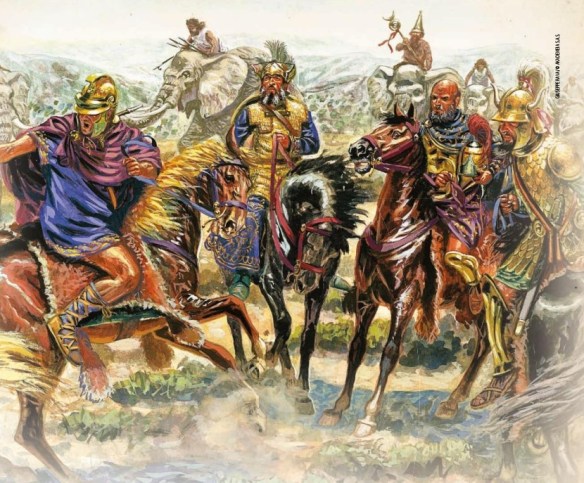In the war’s first years Sardinia had a small role to play. Its peoples had not taken kindly to Roman rule since 237 BCE. Once Roman forces went over in 235, several years of fighting and a good few consular triumphs were needed before peace more or less reigned. Even at the time, some Romans may have entertained suspicion that Carthage was behind the Sardinians’ unfriendliness to their new masters. Cato the Elder, born in 234, would later claim that several Punic treaty breaches occurred before 219 (though his details are missing); and, as noted earlier, the Gallic invasion looming in 225 sent Roman forces not only to Tarentum and Sicily but to Sardinia as well-a consular army, in fact.
After Hannibal’s opening victories in the war, it again made sense to send a legion to the island as a precaution against the Carthaginians. No doubt it helped too with enforcing the heavy payments of tribute and grain that Rome imposed on the locals. These demands naturally increased Sardinians’ discontent. After Cannae, restive chieftains led by one Hampsicora invited Carthage to aid them in a planned rebellion. As some communities stayed loyal to the Romans, based at Carales on the south coast, while the folk of the island’s mountainous interior were largely independent, and as the rebels’ main stronghold was Cornus on the west coast, the rebellion may have arisen in that region. Old Phoenician colonies there such as Cornus, Tarros, and Othoca probably kept in touch with their former hegemon more easily than others nearer Carales could. Hampsicora’s contact at Carthage was an aristocrat named Hanno, influential enough to win the city’s backing for the revolt and no doubt a Barcid supporter, though not a kinsman. He and one Mago, who was related to Hannibal, were appointed lieutenants to Hasdrubal ‘the Bald’, who with about 12,000 troops sailed for Sardinia in 215.
Everything went wrong. Their fleet was so thoroughly deranged by a storm that it fetched up in the Balearic Isles 500 kilometers away, needing repairs. Hampsicora’s rebellion could not wait, but Titus Manlius Torquatus (the first consul to campaign in annexed Sardinia, twenty years before) had already landed at Carales with reinforcements and soon inflicted a defeat on the Sardinians. When Hasdrubal finally arrived and joined them for another effort, Manlius smashed the combined armies. Hampsicora’s son Hostus was killed, all three Carthaginian leaders were taken prisoner, and with Hampsicora’s own suicide and the fall of Cornus the rebellion collapsed. The island continued to be garrisoned by Roman legions (two until 207, a single one thereafer) but caused no further alarm except in 210, when an enterprising commodore named Hamilcar raided first Olbia’s countryside on the northeast coast and then Carales’s, to sail home laden with plunder.
CARALES (215)
In Sardinia, the Roman presence was small and its control of the island was tottering. A certain local magnate, Hampsicora, was stirring up revolt and beckoning to Carthage. Hasdrubal the Bald was sent there with a force of about 12,000 foot and 1,500 horse, but the fleet was damaged and they were delayed by bad weather. On the other side, the Romans sent 5,000 foot and 400 horse under Titus Manlius Torquatus, who now controlled a total force of 22,000 foot and 1,200 horse. He marched upcountry and encamped near the position occupied by Hampsicora. Shortly afterwards Hasdrubal arrived, causing Manlius to withdraw to Carales [Cagliari], Hasdrubal joined forces with Hampsicora and together they advanced toward Carales but were met and engaged by Manlius. The action lasted for four hours during which numerous Sardinians were either killed of fled. The Carthaginians put up a stiffer resistance but eventually they too turned and started to flee, only to find that their retreat was cut off by the Roman wing which had routed the Sardinians. What followed was butchery. The enemy lost a total of 12,000 men killed and 3,700 captured. Among the prisoners were Hasdrubal himself and two other commanders, Hanno and Mago. Hampsicora, learning that his son was dead, killed himself.
